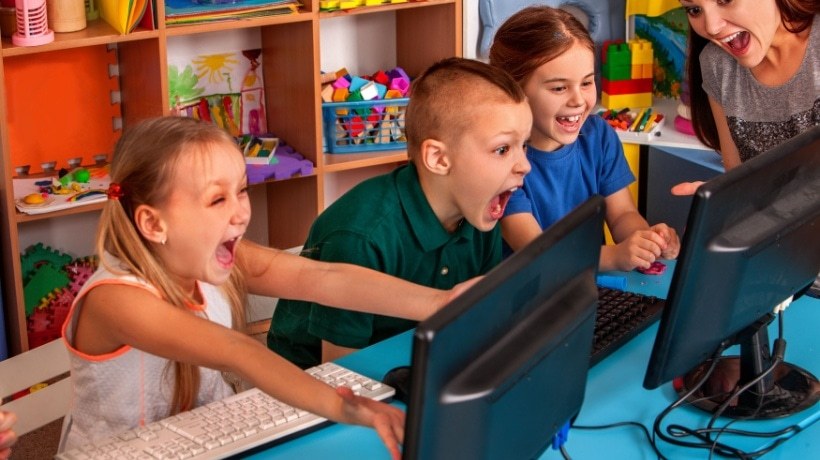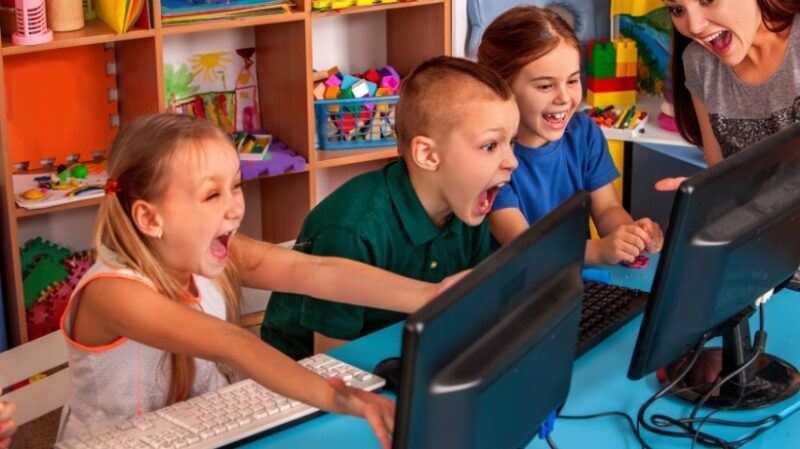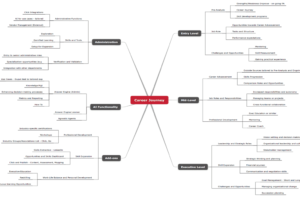
Gamification 2.0: Why Students Learn Better When They Play

From Gamification To Gamification 2.0
You’ve probably heard about gamification, the idea of turning learning into a game-like experience to keep students interested. For years, educators have used gamification in simple ways, like offering points for correct answers, giving badges for progress, or ranking students on a leaderboard. And while these methods worked up to a point, they often focused on extrinsic motivation, meaning students worked hard for the rewards rather than for learning itself. This is where Gamification 2.0 steps in.
Gamification 2.0 goes beyond rewards and instead leverages what truly makes people want to learn: curiosity, challenge, and connection. Instead of just earning badges, students might follow a storyline, unlock new levels that match their progress, or collaborate with their peers to solve problems. This kind of learning feels like playing, and science supports it. Neuroscience shows that when we’re engaged in playful activities, our brains release dopamine, which not only makes us feel good but also strengthens memory and motivation. This means Gamification 2.0 is relying on intrinsic motivation and thus creates lasting and rewarding learning experiences. With better technology, richer storytelling, and a deeper understanding of how our brains respond to games, this new approach of gamification helps students not only stay motivated but also retain knowledge better, as well as engage more actively in the learning process. Let’s dive right into it and explore the science behind it and its components.
What’s The Science Behind Gamified Learning?
When you remember your favorite childhood moments, you likely think of play. Whether it was playing a board game with family, playing pretend with friends, or solving puzzles, these times were special. You enjoyed them, not because you had to memorize rules, but because you were having fun. This is why scientists and educators believe play isn’t just for kids; it is one of the best ways to learn. But how do they back this up?
At the heart of it all is a brain chemical called dopamine. It helps us move, feel happy, and stay motivated. It also makes us feel rewarded when we do something good. Every time we achieve something in a game, like leveling up or unlocking a reward, our brain releases dopamine. This doesn’t just make us feel happy; it also helps our brains remember better. That’s why students are more likely to forget a quiz at school but remember a game with friends longer. The positive reinforcement pushes their brain to pay attention and keep going.
Dopamine is not the only evidence supporting the positive impact of gamification. Two of the most effective study strategies are active recall, which involves pulling information out of memory, and spaced repetition, which involves reviewing things over time. These strategies can seem boring on their own, but games incorporate them without you even realizing it. For example, Duolingo uses these strategies as it encourages you to recall words or phrases, then come back to them later at just the right time to strengthen your memory.
Lastly, psychology supports gamification, too. Learning is not just about memory; it’s also about how you feel while learning. Games create a safe space where mistakes are not embarrassing but part of the process. When students see failure as a chance to try new things, they become more curious, creative, and strong.
5 Key Elements Of Gamification 2.0
1. Storytelling
Gamification 2.0 shows that learning becomes more meaningful when it’s part of an engaging story. Think about your favorite childhood game or a book you loved. Chances are, it was special to you because it had a story. This is because our brains remember stories better than facts. In Gamification 2.0, storytelling makes learning an experience instead of just a pile of tasks. For example, instead of saying, “Today we’re solving ten math problems,” a teacher could turn the task into a story about finding a hidden treasure chest, with students being the explorers. Just like that, the math problems become exciting challenges in the adventure.
Here’s why this approach works:
- Stories provide context, allowing students to see the reasons why they are learning.
- They create emotional connections, so students relate to characters and care about what happens.
- They spark curiosity. Students want to know what happens next, so they keep engaging.
2. Adaptive Challenges
One big challenge in classrooms is that students learn at different speeds. Some kids understand things quickly and get bored if it’s too easy, while other kids find it hard to keep up and feel frustrated when it’s too difficult. Gamification 2.0 uses adaptive challenges, taken straight out of games, to fix this. At the start of a game, the levels are easy, so you can learn. As you get better, the levels get harder, keeping you interested without making you feel overwhelmed. In the same way, in school, adaptive challenges mean that teachers or LMSs change the difficulty based on how well a student is doing. If a student answers questions quickly, they get harder ones. If they struggle, they receive easier questions or hints until they can move on.
3. Balancing Competition And Collaboration
For many, games are about playing with others. Whether you team up with friends or compete in a friendly way, the social part of games makes them fun and memorable. Gamification 2.0 brings that same idea into the classroom. It focuses on balancing teamwork and friendly competition. How does it work? First, with collaboration. Students team up to solve problems, complete tasks, or reach a common goal. This helps them learn from each other and build teamwork skills. Then, with healthy competition. Instead of punishing those who don’t win, competition is used to motivate. For instance, teams might race to finish a puzzle, but everyone celebrates when the whole class succeeds. The main point of Gamification 2.0 is balance: students experience the fun of competition without the stress of winning or losing. They also enjoy the satisfaction of working together on something bigger.
4. Feedback
Feedback is what keeps games interesting. By feedback, we mean the way the game responds to you when you take action. Feedback loops work the same way in learning. Thankfully, with Gamification 2.0, students get immediate responses. If they answer correctly, they unlock the next challenge. If they answer incorrectly, they receive a hint or can try again right away. When they complete a module, they see their progress increase or earn a new badge. This helps students understand where they stand and also lowers the fear of failure because mistakes are just part of the learning process. Gamification 2.0 uses feedback to guide learning, not just to grade it. This is what keeps students engaged, motivated, and always improving.
5. Autonomy
One of the best parts of games is freedom. Players can choose their character, path, or how to solve problems. This sense of control makes the experience personal and fun. Instead of every student following the same strict path, Gamification platforms allow them to make choices about which challenge to tackle first, which topic to explore, and even the type of their assessment, like a quiz, project, or presentation. Even small choices can make a big difference. For example, allowing students to pick between two tasks can increase engagement. Both options help meet the same learning goals, but students feel in control of their learning journey. Why does choice matter? It boosts motivation, as students care more when they feel ownership, builds independence because learners take charge of their progress, and lastly, respects individuality. Not every student learns the same way, so choices make learning more inclusive.
Conclusion
When learning feels like play, students don’t just understand concepts better; they actually remember them, use them, and enjoy the process. That’s the power of Gamification 2.0. It’s not about handing out points or badges, but about creating meaningful experiences that spark curiosity and build real skills. If you want education to keep up with today’s world, you need to make it engaging, adaptive, and fun. Embrace Gamification 2.0 and give students the chance to learn in ways that inspire them and prepare them for lifelong learning.
Source link



